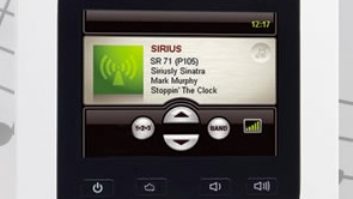You might not like me after you read this.
As we hurtle headlong into the world of the Internet Of Things (IoT), we find ourselves at a constant crossroads; to the left lies “one app to rule them all,” delivering the home on a platter of watered down functionality but easy access. To the right lies a smattering of different apps, one for lighting, one for audio, one to make toast…
Which approach is best?
As usual, the best approach seems to lie somewhere in between the two extremes. Installing subsystems that stand on their own legs as well as integrate with control systems gives you the best of both worlds. Sonos really shines when tied into a control system, but some in the home might want to only have access to the Sonos app for simplicity’s sake. A Lutron lighting control system can be tied into pretty much any control system while giving the client easy scheduled scene creation and gel-fencing capabilities with the Lutron app. Those are just two of many great examples.

Image: ThinkStock
Think of the first universal remote control you ever installed. Did you throw away the old remotes? Heck no! You put them in the “junk” drawer and every now and again they come in handy. The same holds true for the subsystem/control system relationship. Maybe you’ll use one app most of the time, but need some of the added functionality of the subsystem app from time to time. Why close doors that needn’t be closed? The only standard carriers of closing doors (and systems) seem to be the control system companies. To be sure, slapping golden handcuffs on the customer guarantees business moving forward, but who wants to behave in a manner inconsistent with the best interests of the client? Nobody likes feel bent over a barrel or the sense that you’ve taken advantage of them.
In short, a single point of failure in any system is something to be avoided at all costs. If the lighting control system fails, let it fail alone. Same goes for security, audio/video and other subsystems. Put your own approach to the test. Did you pass? Most of us at one time or another get drunk on manufacturer Kool-Aid. We would all do well to remember the age-old advice that we shouldn’t put all our eggs in one basket.
Manufacturers come and go (Kaleidescape’s recent scare is a great example). Are you putting yourself at unnecessary risk by installing subsystems that need each other for survival?
We’re moving quickly into a world where subsystems are easily swapped out and upgradable. Don’t paint yourself into a corner by installing all your subsystems with a single point of failure. That said, showing our clients the benefits of a single control app tying together these disparate systems is essential and should be a part of your sales process. Let the client decide after showing them an easy set of control options.
Here are some easy ways to vet new subsystems:
1.Are there drivers available for the major control system companies?
2.Is the company well funded and CEDIA friendly?
3.Does the product have a good track record?
4.If the subsystem fails, will it affect other subsystems?
Thinking in terms of the belt-and-suspenders approach of installing integrateable-yet-standalone subsystems will stand you in good stead and allow you to be nimble should the scope change or upgrades be needed. Your customers will love you for it.
“I hope you heard this song, and it pissed you off.”
-The Spin Doctors, “Little Miss Can’t Be a Wrong”
Stay frosty and see you in the field.



